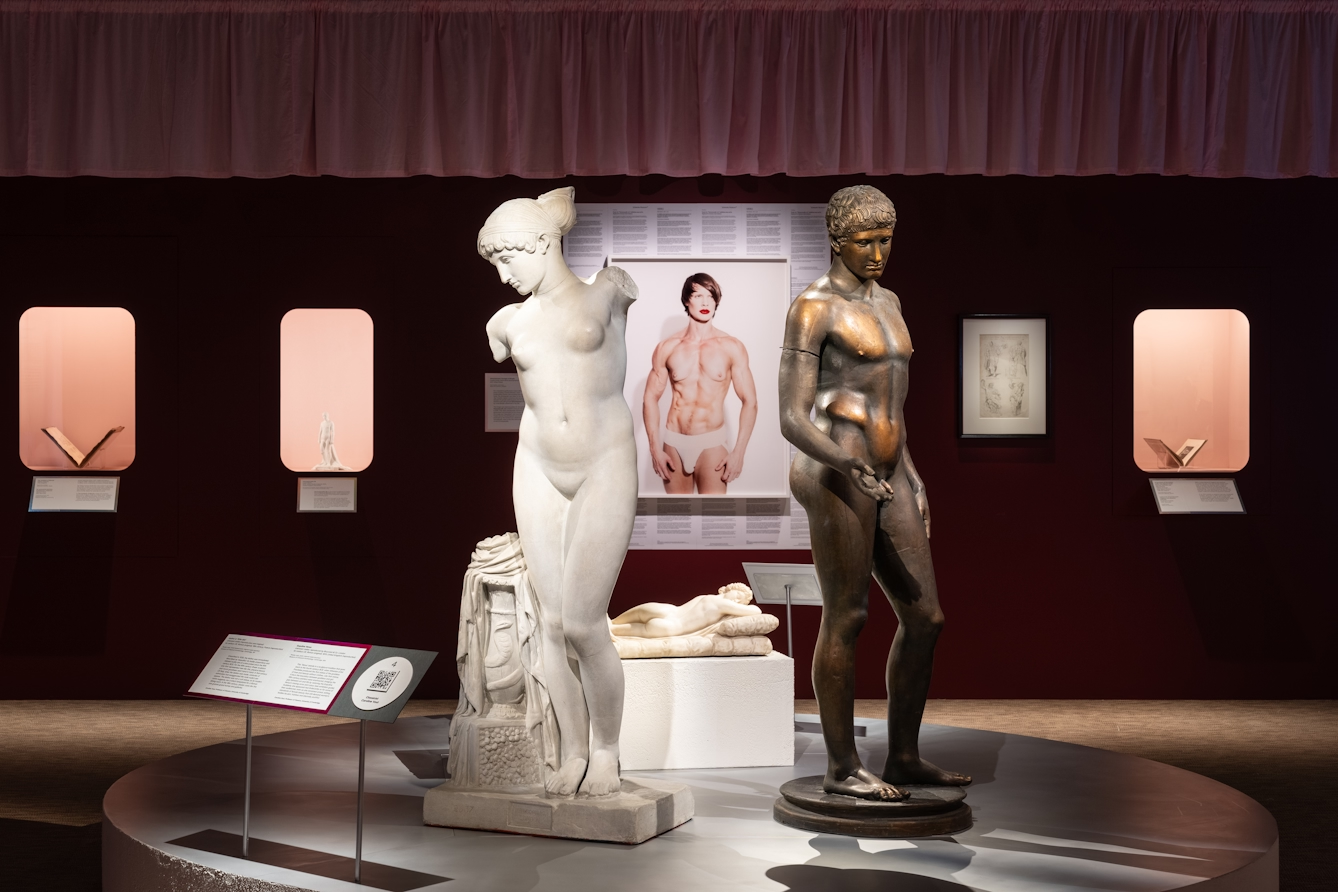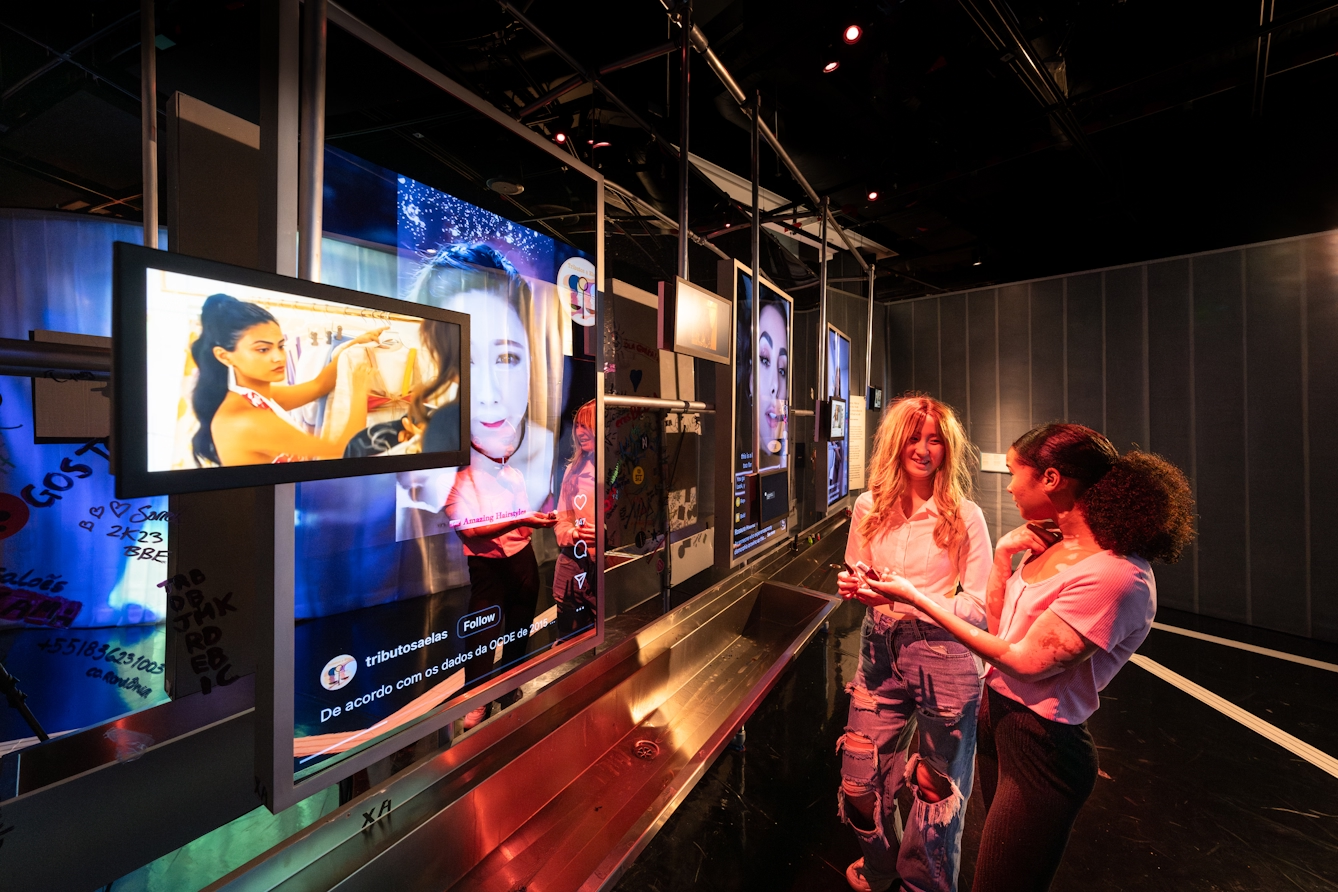In my previous blog, I explored how social media intensifies women’s “self-optimisation pressure.” But who defines “beauty” actually? The Cult of Beauty exhibition provided part of the answer.
Case Studies: The Cult of Beauty
From classical sculpture to modern algorithms, beauty standards are fundamentally socially constructed.

Esquiline Venus and Idolino (c. 500 BCE)
Classical sculptures like Esquiline Venus and Idolino (c. 500 BCE) idealized the human form and set beauty standards during the Renaissance.
However, in the age of social media, algorithms have replaced sculptors. For example, in Xcessive Aesthetics, a nightclub bathroom’s mirrored screen loops selfies, filters, and aesthetic commentary, revealing how beauty has become social capital. Social media encourages women to spend time taking selfies, editing photos, and curating their image, reducing their social value to likes and follows. This unpaid beauty labor demands their time, yet offers no compensation.

Beauty unravelled in the virtual scroll, 2023, Xcessive Aesthetics.
The relativity of beauty
My favorite piece in the exhibition is Eszter Magyar’s installation, It makes no sense being beautiful if no one is ugly, which directly critiques how the binary opposition between beauty and ugliness shapes modern aesthetic standards.

It makes no sense being beautiful if no one is ugly, 2023, Makeupbrutalism.
At the center of the installation, a mirror displays “I’ve mistaken social pressure with self-expression”, surrounded by labels satirizing the beauty industry’s false promises, such as “Self-expression Remover” and “False Promise Mascara.” Magyar employs visual language to challenge beauty standards and expose how the beauty industry manipulates self-identity by cultivating insecurities.
In the second phase of my curatorial project, Reflection, I aim to use artworks from The Cult of Beauty to further critique how social media manipulates beauty reconstruction, commodifies social capital, and exploits the attention economy.
Reference:
The Cult of Beauty. (2023, October 26). Wellcome Collection. https://wellcomecollection.org/exhibitions/the-cult-of-beauty
Central photographic artwork, Advertisement: Homage to Benglis, 2011, Cassils. © Cassils. Statues, Equiline Venus and Idolino. Courtesy of the Museum of Classical Archaeology, Cambridge. Gallery Photo: Benjamin Gilbert. Attribution-NonCommercial 4.0 International (CC BY-NC 4.0).
Mirror, mirror on the wall: Beauty unravelled in the virtual scroll, 2023, Xcessive Aesthetics. Gallery Photo: Benjamin Gilbert. Source: Commissioned by Wellcome Collection. Attribution-NonCommercial 4.0 International (CC BY-NC 4.0).
It makes no sense being beautiful if no one is ugly, 2023, Makeupbrutalism. Gallery Photo: Benjamin Gilbert. Source: Commissioned by Wellcome Collection. Attribution-NonCommercial 4.0 International (CC BY-NC 4.0).


Leave a Reply